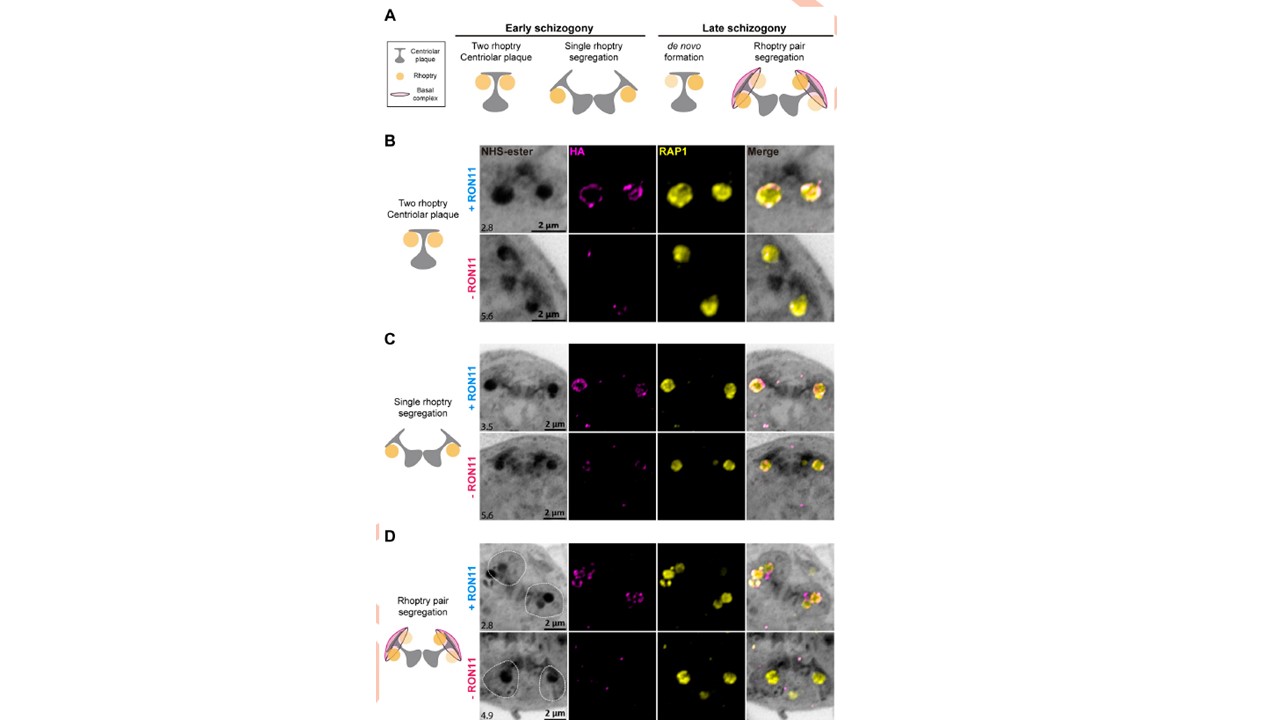RON11 is required for the de novo biogenesis of the final rhoptry pair during merozoite segmentation. (A) Schematic of the current model for de novo formation of rhoptries during schizogony. (B–D) Representative U-ExM images of different steps of rhoptry biogenesis in RON11apt late schizonts in the presence or absence of aTc. (B) Two rhoptries associated to each branch of a CP in the presence or absence of aTc. (C) Single rhoptries being segregated with each branch of a dividing CP during mitosis, and (D) final rhoptry pairs being segregated with a CP branch during the final mitotic event. Basal complexes are demarcated by a discontinuous line. Late-schizont stage parasites were stained with NHS-Ester (grayscale), anti-HA (magenta), and anti-RAP1 (yellow). Selected Z stack images were projected as a combined single image. Number on image = Z-axis thickness of projection in μm. CP, centriolar plaque; HA, hemagglutinin; NHS, N-hydroxysuccinimide; U-ExM, ultrastructure expansion microscopy. Anaguano D, Adewale-Fasoro O, Vick GS, Yanik S, Blauwkamp J, Fierro MA, Absalon S, Srinivasan P, Muralidharan V. Plasmodium RON11 triggers biogenesis of the merozoite rhoptry pair and is essential for erythrocyte invasion. bioRxiv [Preprint]. 2024 31:2024.01.29.577654. PMID: 38352500;
Other associated proteins
| PFID | Formal Annotation |
|---|---|
| PF3D7_1410400 | rhoptry-associated protein 1 |
